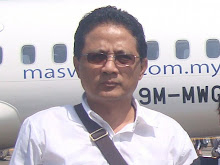Pierre Marthinus and Ayaka Kimura, Jakarta | Wed, 09/07/2011 7:00 AM A | A | A |- Klipping the Jakarta Post
Yoshihiko Noda, recently elected head of the Democratic Party of Japan (DPJ), is now the country’s leader following a set of elections within the DPJ after, on Aug. 26, Prime Minister Naoto Kan made public his intention to resign from the post.
Interestingly, at first Noda was not the most popular and widely supported candidate within the DPJ. In terms of public popularity, previous poll results conducted by Yomiuri Shinbun recently showed that Japanese public opinion was divided and unevenly distributed toward the more popular former foreign minister Seiji Maehara (48 percent) and Economy, Trade, and Industry Minister Banri Kaieda (12 percent), with Finance Minister Yoshihiko Noda receiving only 9 percent of support.
In terms of political support within the party, it was Kaieda who won the first round majority within the party, mainly due to political support from the group within the DPJ centered on Ichiro Ozawa, a senior politician embroiled in finance scandals.
In the final leg, however, smaller factions opted to pool their votes against Ozawa’s influential yet notorious group, granting Noda the majority vote.
Many saw that Noda’s election into the top seat was a political compromise in which “no one group” achieved what they initially wanted. Noda, 54, jokingly noted that due to his physical image, resembling an eel-like, bottom-feeding fish with whiskers, public expectations toward his government were so low from the outset that he might actually be able to fulfill them.
Ironically, the fact that previous leaders repeatedly could not fulfill public expectations and lost the support of their political counterparts indicates that Japan’s political turbulence is no joking matter. There are some important lessons that Indonesian political parties should learn from this.
First, public image, charm and popularity are the least reliable source of political leverage and do not always translate into political dividends, especially when the interests of other political actors are also involved.
Individuals with significant public popularity, such as Maehara or perhaps Susilo Bambang Yudhoyono, might not always be able to convert such popularity into tangible political benefits when needed.
In contrast, corruption and finance scandals, such as those implicating Ichiro Ozawa or Indonesia’s Muhammad Nazaruddin, can easily haunt and taint the public image of their larger group and political party.
Second, it is also important to keep intra-party corruption scandals down to acceptable and tolerable levels. Although it is impossible to prevent every single act of corruption, any “real” political party should always have its own internal mechanisms of accountability, monitoring and ethics.
Therefore, the leading political party’s practice of “whitewashing” by framing recent corruption cases as separate incidents and individual acts unrelated to the political party should no longer be accepted by the Indonesian public.
Third, a weak and indecisive political leadership might limit a country’s ability to face its most pressing challenges. Japan’s post-tsunami reconstruction and the response to the Fukushima nuclear power plant disaster had been seriously constrained by its unstable and discordant domestic politics. Although many international observers praised Japan’s response to the tsunami, its own public is not impressed.
Survey results from Yomiuri Shinbun indicated that public satisfaction with Japan’s post-tsunami response decreased from 43 percent in April to 33 percent in May and fell further to 28 percent in June while positive perception of the response to the Fukushima nuclear meltdown fell sharply from 27 percent in April to 19 percent in May and down to 17 percent in June.
The same can be said of the general public perception about Indonesia’s performance in the Failed State Index and its uphill battle against corruption.
Fourth, political support can — and will — be withdrawn as quickly as it was once given. The fact that Japan has had five prime ministers “pushed” out of office in the last five years under public distrust and intense political pressure should be a sign of caution for Indonesia’s current leaders.
Mounting public distrust in Yu-dhoyono in the face of corruption scandals and the obvious lack of protection of minority groups, if not managed in a timely manner, might create serious repercussions for his political party and potential successor.
Lastly, a country’s international image and role will partly be shaped by its own leaders at home. In contrast to Kaieda, who is seen as “more friendly” to China, Noda’s strong position on historical issues and the Yasukuni Shrine controversy might strain Japan’s relations with its immediate neighbor.
The focus on post-tsunami disaster management also means that other important issues for the region, such as North Korea, will have to be put on hold in regional meetings.
In the current political instability and economic downturn, Japan’s foreign policy, often dubbed as “checkbook diplomacy”, might mean fewer checkbooks and less diplomacy. Indonesia’s preoccupation with its “international image” might be just as problematic as Japan’s “checkbook diplomacy” in the future.
There are many things that Indonesia and Japan, two of Asia’s largest democracies, can learn from one another. Observers need to refrain from over-generalization. It is safe to say that both nations want firm and stronger domestic political leadership for change.
Pierre Marthinus is program director of Pacivis at the University of Indonesia. Ayaka Kimura is a student at Waseda University, Japan.
Subscribe to:
Post Comments (Atom)

No comments:
Post a Comment